The Genus Euphorbia – More than just the Christmas Poinsettia
Besides the Christmas tree, another plant that adds to the festive cheer is the Christmas Poinsettia.
Often mistaken for flower petals, its colourful bracts are actually modified leaves that surround a bunch of small, inconspicuous yellow flowers. Through extensive breeding, the bracts of the Christmas Poinsettia, which are traditionally red, are now available in other colours including pink, orange, cream, white, apple green and even in marbled (variegated) forms!
The Christmas Poinsettia or Euphorbia pulcherrima belongs to a large family of plants known as Euphorbiaceae (the Spurge family). The genus Euphorbia itself contains more than 2000 species and they can range from small, herbaceous plants to large and much-branched trees.
The appearances of the plants differ greatly from one species to another, depending on their native range and physical adaptations to the environment. The Christmas Poinsettia is a shrub-like plant that grows in deciduous tropical forests. Species from an arid environment often have water-storing plant parts and/or developed spines to deter predators. Many armed Euphorbia species are often mistaken for cacti. A commonality among all species is that they exude a poisonous, milky sap when the plant is injured or cut. The sap should not be ingested or come into contact with skin. With Christmas around the corner, take this opportunity to learn more about the diversity of plants from the genus Euphorbia.
I have picked out a few interesting ones that would make great gifts for fellow plant-lovers! These are best grown on a sunny window sill with slightly moist, porous growing media consisting of some pumice and small quantities of burnt earth. While they may be drought-tolerant, the plants should not be allowed to dry out totally as the stress may cause them to lose their leaves.
Euphorbia decaryi
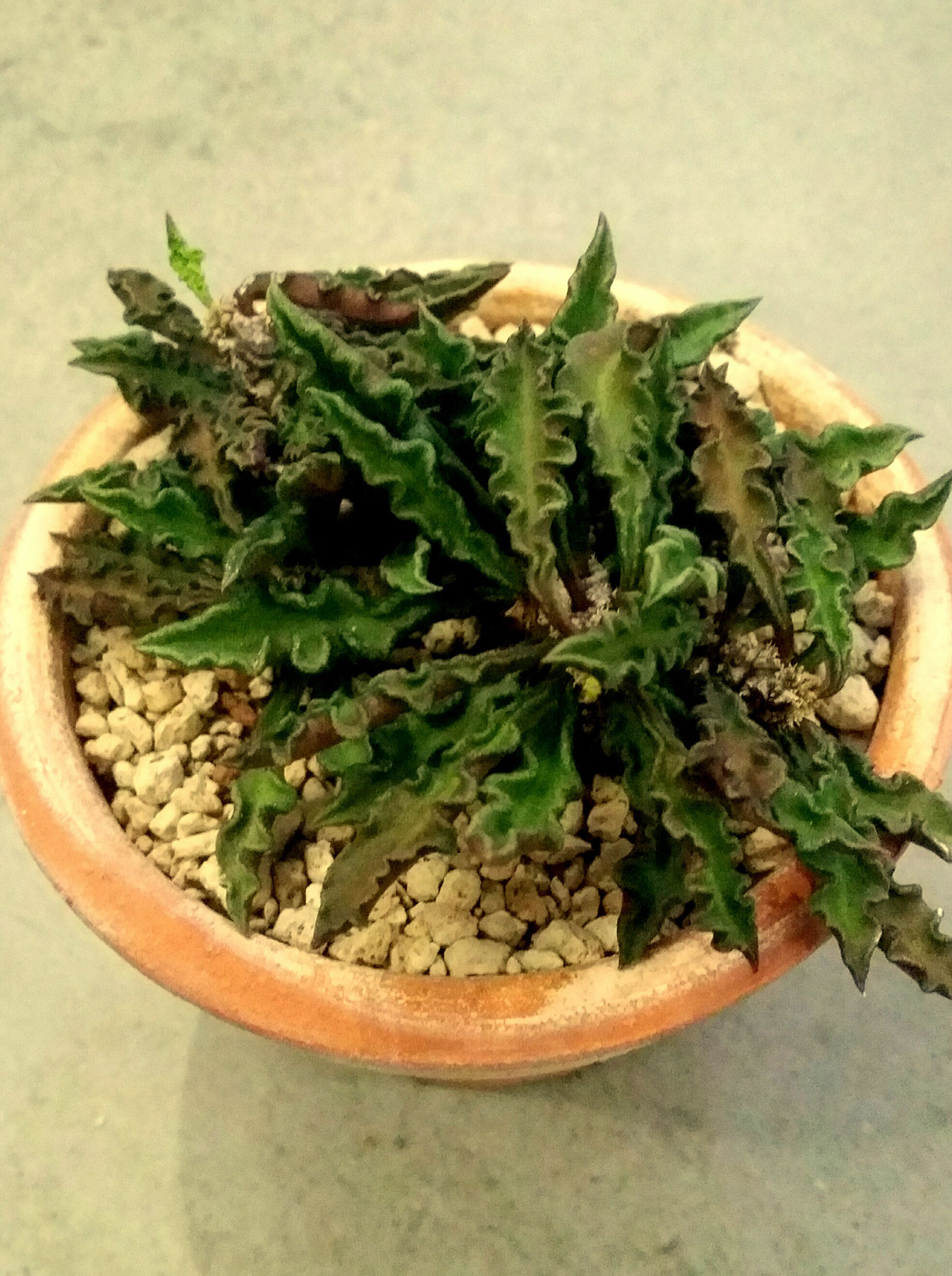
Euphorbia decaryi can occasionally be seen for sale in brown plastic thumb pots in local nurseries. It is a small, low-growing shrub with numerous leaves that have an undulating edge. The leaves take on a purplish-red hue when grown under strong sunlight. The numerous branched stems are thick and store water; they can be found either partially exposed above or buried under the growing media. Gardeners sometimes selectively expose and prune its branches, which turns the plant into a miniature bonsai!
Euphorbia francoisii
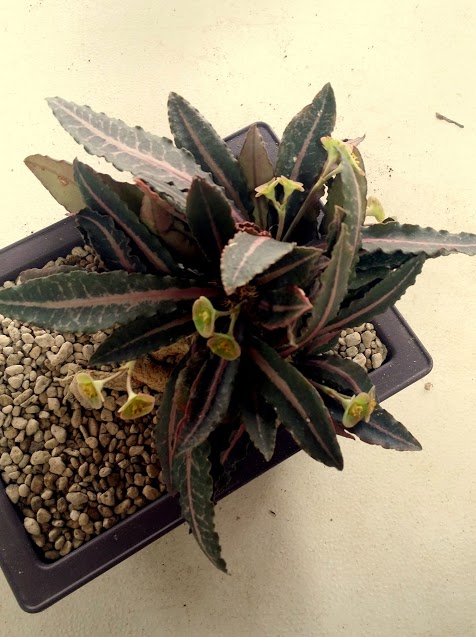
A slow-growing species, Euphorbia francoisii is a small shrub with swollen stems that are hidden below the ground. Using a shallow pot, growers often lift and expose the plant’s stems above the soil level to showcase its visually-complex network. In recent years, the breeding of such ornate cultivars with beautiful leaves that come in a wide array of sizes, shapes and colours has become popular.
Euphorbia milotii
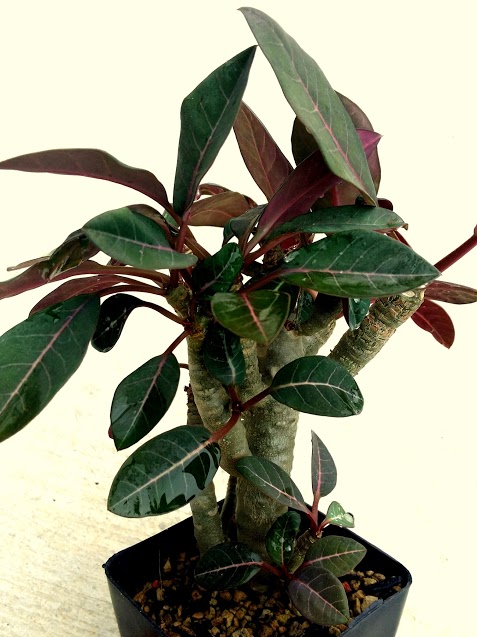
Euphorbia milotii is a stout and many-branched succulent species with attractive leaves that are reddish-purple on the underside. It grows as a small shrub with numerous thick branches. In some ways, the plant resembles a miniature frangipani plant (Plumeria).
Euphorbia obesa
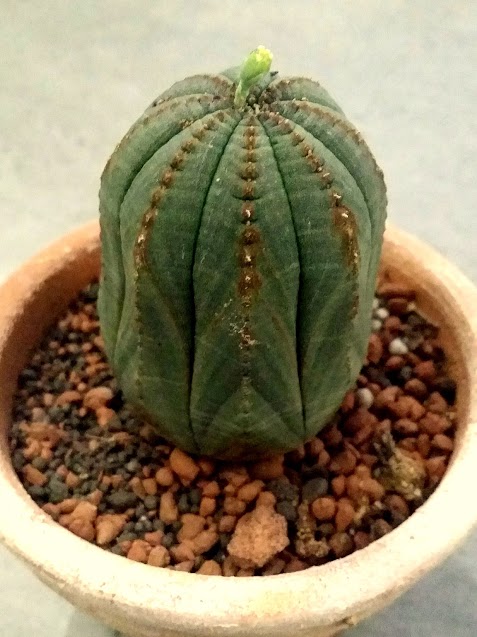
Euphorbia obesa, commonly known as the Baseball Plant, is a spineless and leafless succulent Euphorbia species. The mature plants tend to elongate upwards and take on an oblong shape. At the base of well-grown specimens, smaller plants congregate in what looks like a colony of spheres.
Euphorbia gottlebei
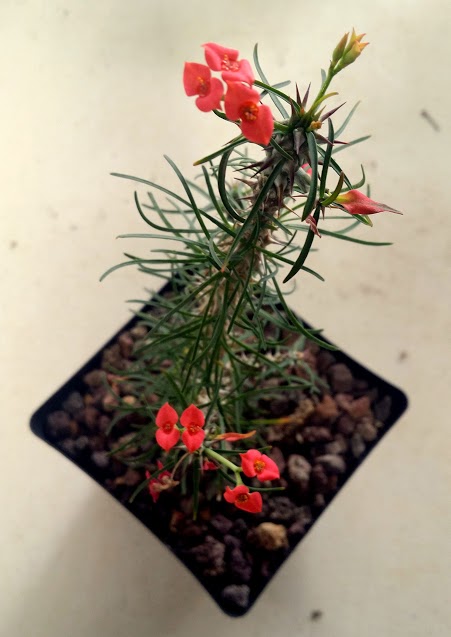
Euphorbia gottlebei has numerous spines on its stems and produces similar-looking but smaller, attractive inflorescences with red bracts. With patience, specimens grown for a long time will branch and begin to look like a small tree. Older specimens will reward its grower with numerous red inflorescences.
Text and photos by Dr Wilson Wong



Have views or comments on this article? Let us know via this form. If you would like to give us feedback on any other areas relating to our parks and gardens, please submit via https://www.nparks.gov.sg/feedback